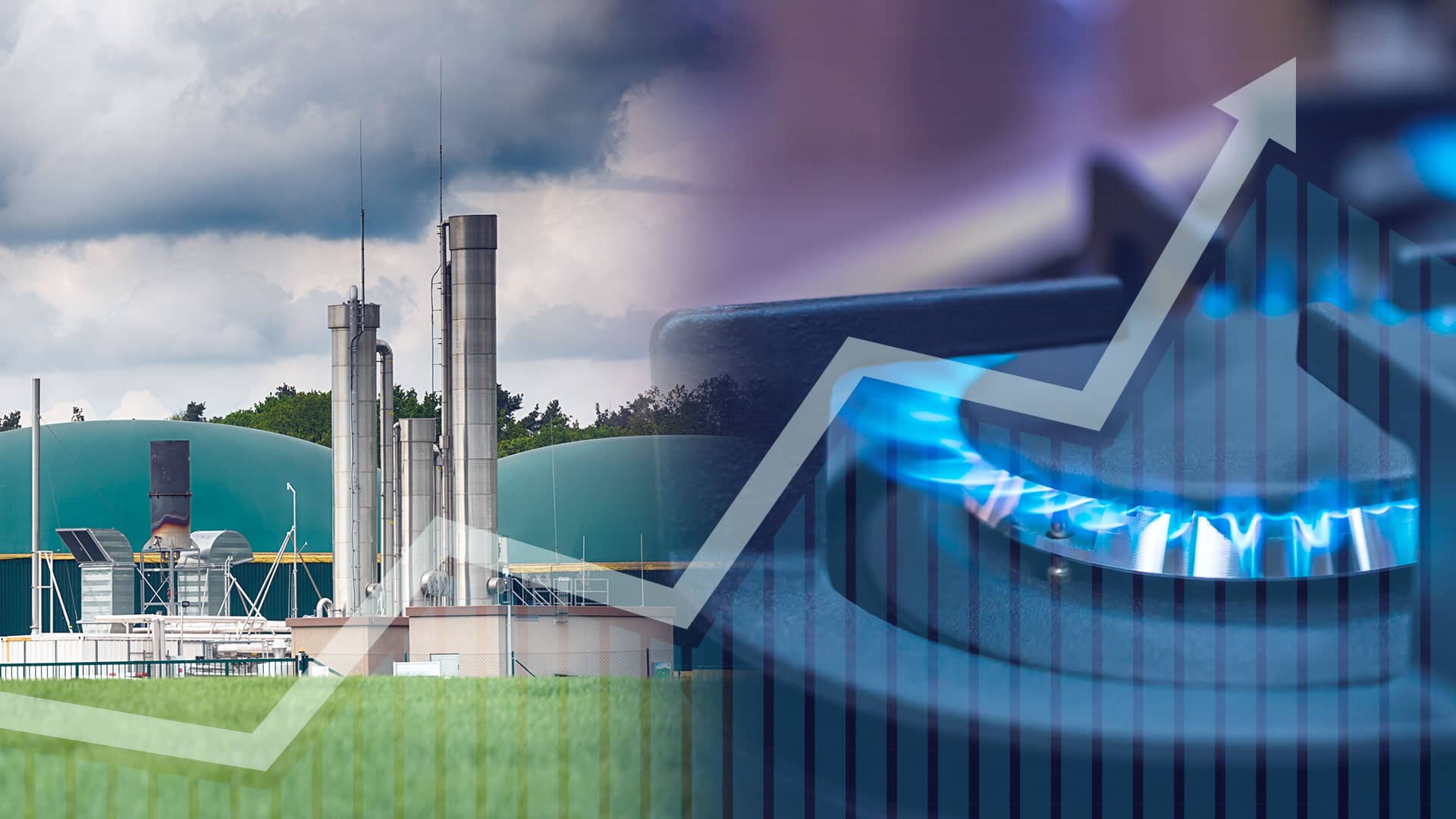
Price for natural gas has increased over 80% in the last 12 months.
As of March 2022, natural gas is trading above $4.50. This is a huge drop from the 12-month high last fall of $6.32 per Metric Million British Thermal Unit (MMBtu). Despite this decline, the price remains 80% higher than the 12-month low of $2.50. Higher prices are a consequence of increased energy demand.
Demand for natural gas is going up.
Commercial operations and consumers use natural gas as a reliable and relatively clean, power source for many applications. While the world tries to transition away from fossil fuels, the global demand for natural gas continues to rise. The growing demand is driven by the world population expanding at a rate of 81 million people per year. New sources of natural gas must continuously come on-line to support the growing demand, or supply shortages will emerge.
Like any other commodity, the Law of Supply and Demand governs the price of natural gas. The spot price represents an equilibrium between existing supply and current demand. Excess supply of natural gas during flat or falling demand will decrease the spot price. If the opposite market conditions occur, the spot price increases. Current economic conditions show supplies are dwindling, while global demand for natural gas continues to increase.
The world has a natural gas shortage.
Several variables contribute to the shortage of natural gas worldwide. First, according to Rystad Energy, global investments in natural gas and LNG totaled approximately $149 billion in 2022. This is down nearly 11% from previous levels seen in 2019 prior to the COVID-19 pandemic. Second, some countries have enacted energy policy that diverts funds away from traditional fossil fuel projects to renewable options. Renewable sources do not have comparable energy yields to natural gas for the same investment. Thus, such decisions have unintendedly decreased supply to the market.
Both geo-political tensions and drilling restrictions now impact supplies more than ever. They have risen in regions that are net exporters of natural gas. In some countries, they dictate how natural gas is transported and where it can be delivered. Economic sanctions have also gone into effect, resulting in the immediate reduction of natural gas from the global economy.
Biogas can provide much needed supply.
One effective method for quickly increasing supply is to boost the production of biogas. Biogas is a renewable natural gas (RNG), produced from bacteria digestion of organic matter in an anaerobic environment. The process gives off methane, carbon dioxide as well as other elements in smaller concentrations. Biogas can be commercially produced and captured using anaerobic digestors. These digestors process food waste, manure, wastewater biosolids, and other organic materials. Landfills also serve as a source of biogas because the buried organic waste breaks down. Dedicated biogas plants already exist in many areas. These operations employ biodigesters for sustainable large-scale production.
Biogas must meet specifications before it can be sold.
Raw biogas cannot be used immediately as a direct replacement for natural gas. Unwanted contaminants must first be removed in a separation process. These include ammonia, hydrogen sulfide, water vapor, and carbon dioxide. Once the target biomethane is pure enough, it can be injected into commercial natural gas pipelines. The purification process is called biogas upgrading, and it represents the final processing step before the RNG can become a new source of natural gas to the market.
Natural gas pipeline operators, who buy the biogas, have maximum allowable tariff limits for the gas. These limits establish the highest allowable levels for the contaminants in biogas, such as oxygen, hydrogen sulfide and moisture. Before biogas can enter a pipeline, it must be analyzed to verify that it meets the requirements of the pipeline tariff. This analysis also happens each time the gas changes hands as well as when it reaches the contractual downstream buyer. Because these requirements vary from pipeline to pipeline and from buyer to buyer, biogas plant operators must turn to high-performance gas analyzers.
Gas analyzers verify whether biogas falls within specifications. Each unit targets a specific gas contaminate and provides ‘real-time’ monitoring of what is in the pipeline. Different analyzer designs exist. They are available in both fixed and portable configurations. Some units measure trace levels, while others read percent levels of the target gas. The proper analyzer must be selected and installed for operation because incorrect readings will lead to injected biogas being shut-in. This prevents the gas from moving any further in the pipeline. The best gas analyzers for biogas upgrading will contain a proprietary design that delivers the required performance, reliability, and accuracy.
The verdict.
Boosting biogas supplies is a viable approach for increasing natural gas supplies. It bypasses many environmental objections that target traditional natural gas production. As an added benefit, it utilizes existing waste materials as its feedstock. But most important, it helps the consumer by lowering the spot price.
